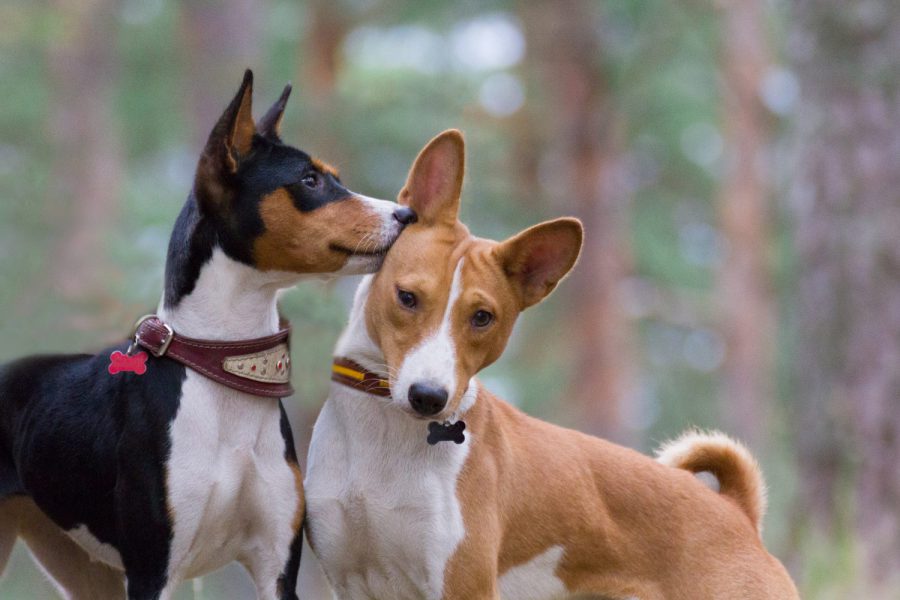
Don’t like the dialogue? Change it. Part 2
Is linebreeding always inbreeding? There is a saying I’ve heard often in the livestock world “it’s linebreeding when it works, and inbreeding when it doesn’t“. Meaning? Inbreeding, in the old way we considered it, in terms of the pedigree COI and inbreeding, doesn’t inherently cause problems unless it results in disease expression or health and longevity being affected. In some cases, this happens because our inbreeding values are too high, or historical inbreeding (and bottlenecks) have resulted in a depletion of breedwide diversity of a breed. Linebreeding, on the other hand, has potential benefits. For example, in cattle you might be selecting for a cow that produces milk with more butterfat. Linebreeding on a cow with a higher butterfat content would result in offspring with predictably higher butterfat content; this is desirable, but of course you want those cows to also be healthy. Similarly, linebreeding on a dog with innate herding instinct helps set that in offspring. It is desirable, as mentioned previously, in purebred dogs to have predictable traits in each subsequent generation produced.
Sometimes we can think we are inbreeding, when we really are not. More commonly, we can think we are outcrossing when really the dogs are related. More explicitly, there are times when dogs are highly related according to pedigree but are actually unrelated due to the variation of genetics received from their sire and dam due to recombination. On the other hand, dogs that appear unrelated via pedigree are actually closely related due to historical inbreeding.
Let’s take a look at real life examples of a breeding that should be closely related based on pedigree.
Both of the following breedings should be highly related, as the potential puppies’ granddam on one side is the great granddam on the other in both cases.
This first example is more what I would expect for a linebreeding. While it’s a category 6 breeding in terms of the standard poodle population (the lower the category the closer related) the IR for the litter goes very high, as well as the average being higher than one might feel comfortable with doing, especially knowing the pedigree is so tight.
This second breeding is the exact same pedigree (except reversed genders). We would expect this breeding to also be highly related and predicted to produce puppies with IR values that go quite high. However, genetically they are category 10 (unrelated) and their IR value tends to be much lower; very few of the predicted puppies in the litter would fall at the high IR value of .15.
Both of these litters would help redistribute our breedwide allelic richness or biodiversity by producing puppies with less commonly represented genetics for the population (higher than breed average OI). However, the second breeding would be preferable in terms of inbreeding values. On paper they would both look like a fairly tight linebreeding without the genetic diversity testing. Of course, pedigree risk would be important to evaluate in instances of linebreeding just as before, however this method can help identify linebreedings that are less related.
People often tell me now that they cannot imagine breeding without this software, and they marvel how they bred back before having this analysis; they just did not know truly how related their dogs were to one another.
Let’s CHANGE the dialogue of purebred dogs!
Some of the public hears INBRED instead of PUREBRED. Why? No matter what we do, purebred dogs with closed stud books have a closed gene pool and breeders are breeding for a specific breed type. Go back far enough, there will be repeat dogs in our pedigrees due to popular sires or other bottleneck events….or just the foundation of a breed. And, breeders do sometimes linebreed to set type. But this doesn’t mean our dogs are actually inbred or unhealthy. We can have the same ideals of producing outbred puppies within our breeds. Where is the line drawn? Linebreeding is okay, until it isn’t, and diseases become common in a breed.
But you can change this conversation with us. Let’s change the dialogue by diversity testing and knowing what we are breeding!
All purebred dog breeds with closed stud books are closed gene pools. They have set their type and we want these breeds to exist for our future generations. You can breed for outbred puppies regardless of pedigree. Breeders need to be empowered to:
Populations that have well dispersed genetics tend to be healthier; we see this all the time in our day to day work with breeds and breeders. Breeders are passionate about their dogs and they want to do the best by their homes, puppies, and their lines. Breeding responsibly is a HARD job and breeders often get so little credit for their devotion.
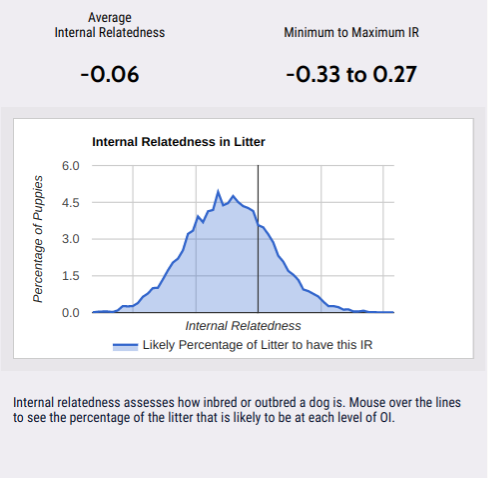
Picture of our predictive software showing what to expect in terms of inbreeding values within a predicted litter. The more negative the values, the less inbred. The more positive, the more inbred. You can know how much of your litter would fall at the highly inbred level of .15 by mousing over the graphs on our website.
Our goal here at BetterBred is to support breeders whose goals are to conserve their breeds for the future. We identify dogs that are the most unrelated from one another within closed gene pools, whether they be establishing breeds, breeds managing an outcross project, established breed that is maintaining what they have, or a breed that is bottlenecked needing to redistribute its existing diversity. We find dogs with atypical and underrepresented genetics for your gene pools. We absolutely understand that type, temperament, drive, and health testing are cornerstones to stewarding our beloved breeds. Dog breeders have spent decades and centuries honing our beloved companions. Let’s work together to allow them exist for our children’s children!
This testing and breed management software is something to add to our arsenal for dogs bred purposefully. Not detract.
Don’t like the conversation? LET’S CHANGE THE DIALOGUE!
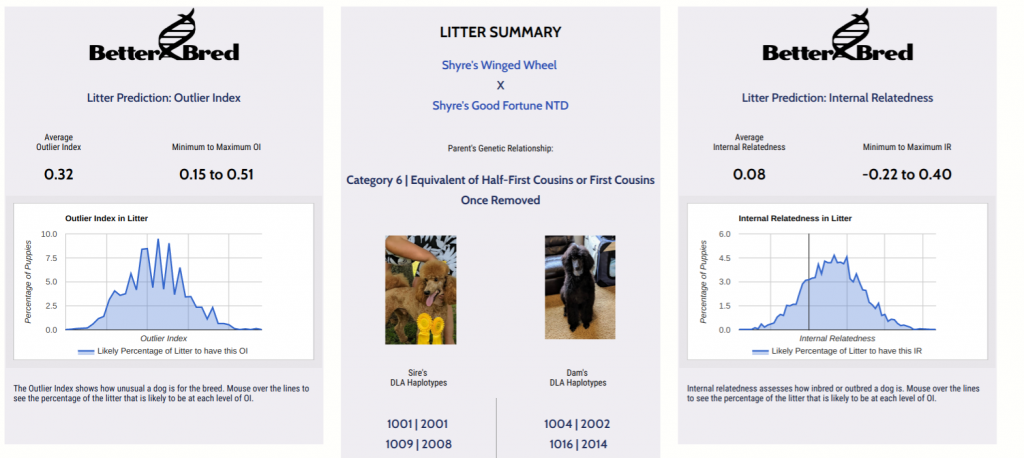
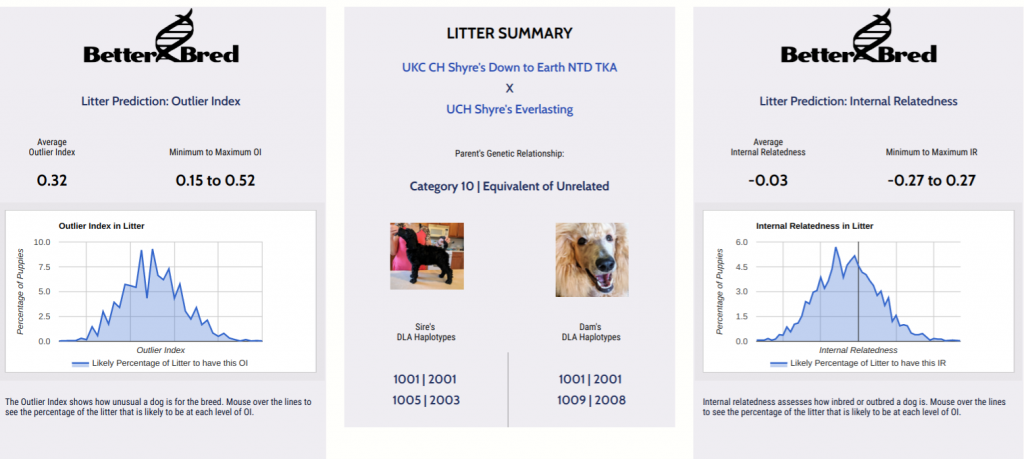
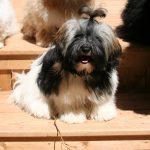 Next Post
Next Post


